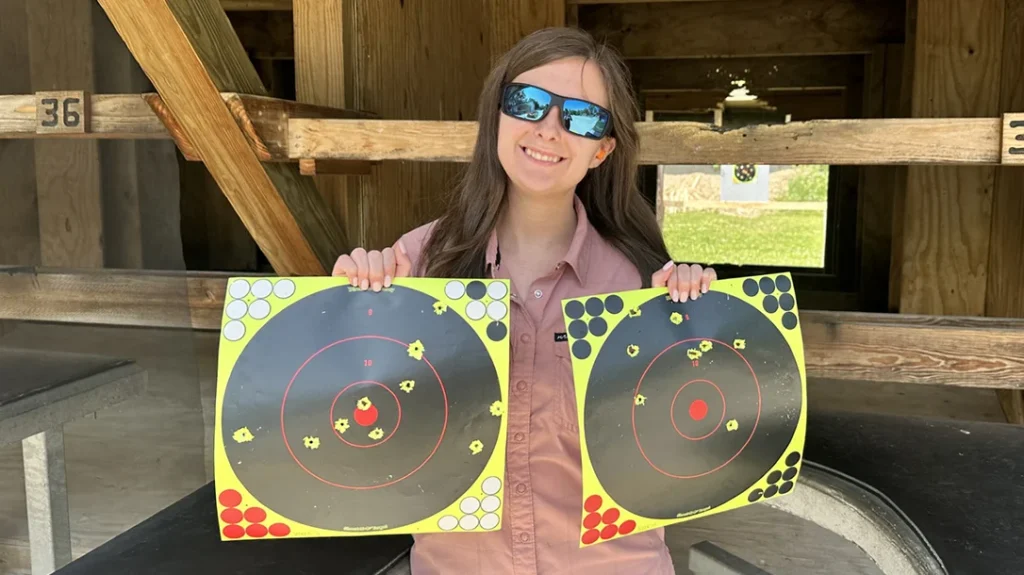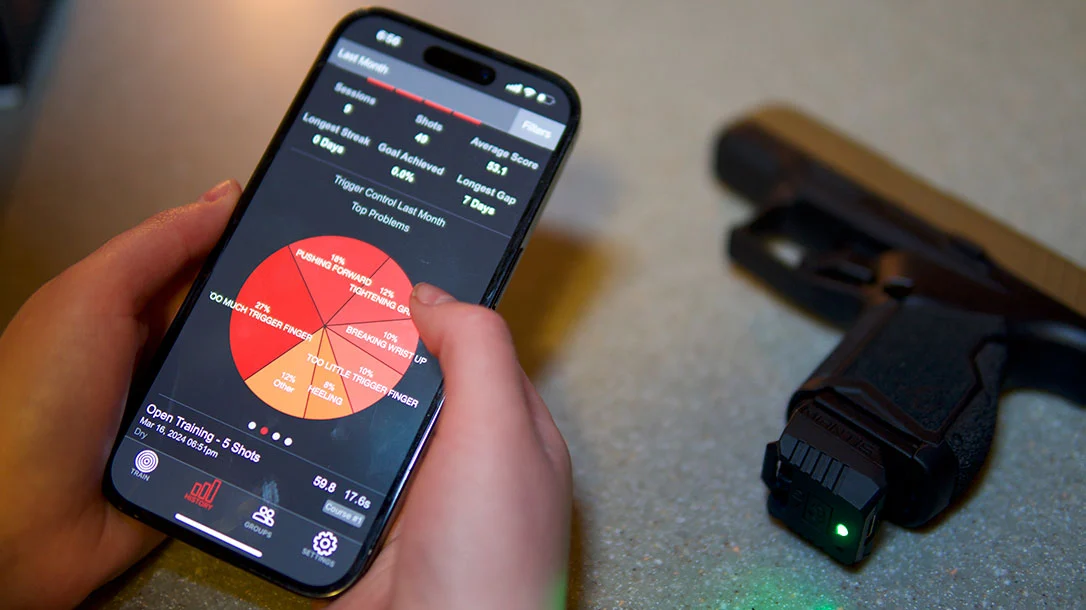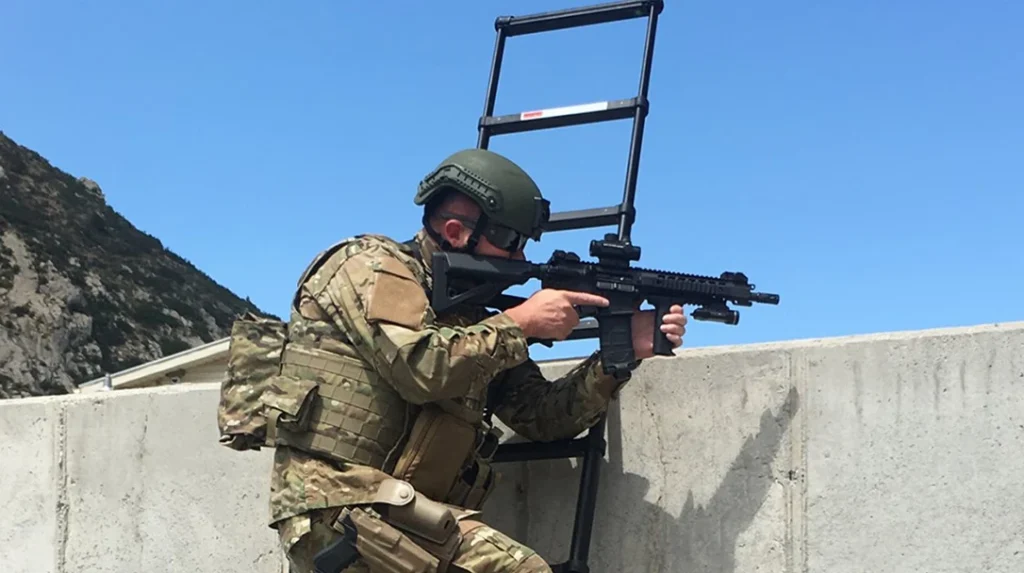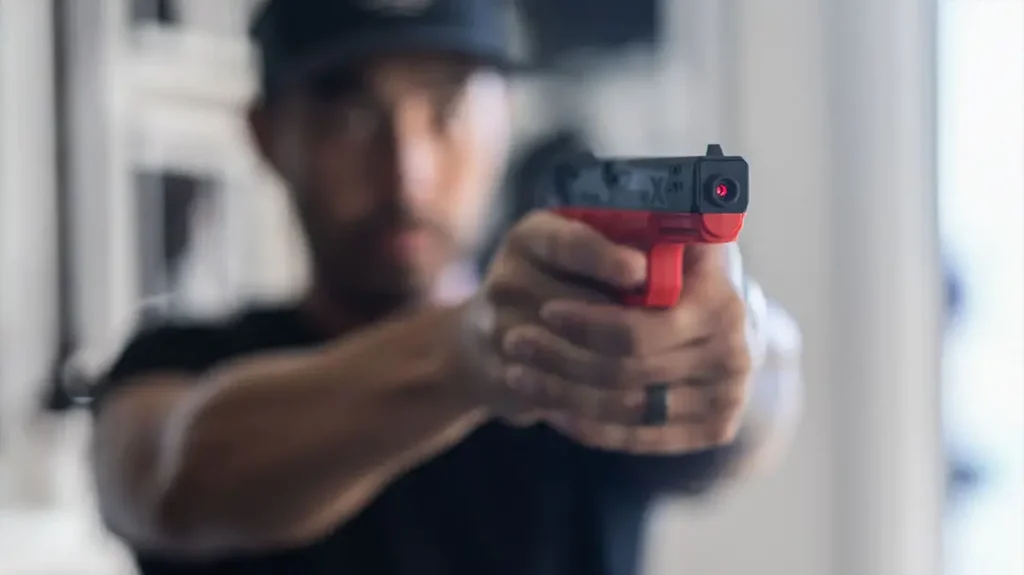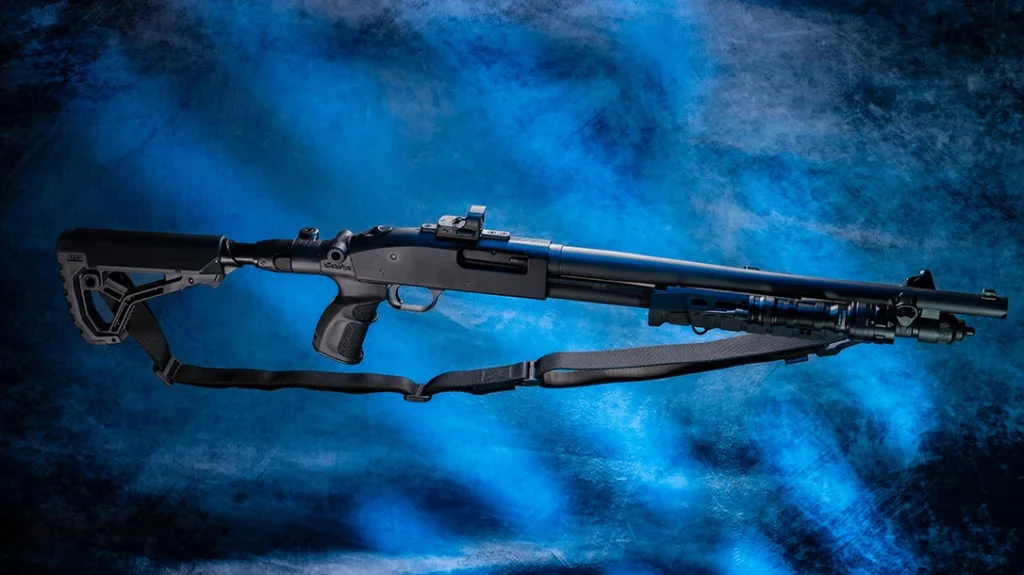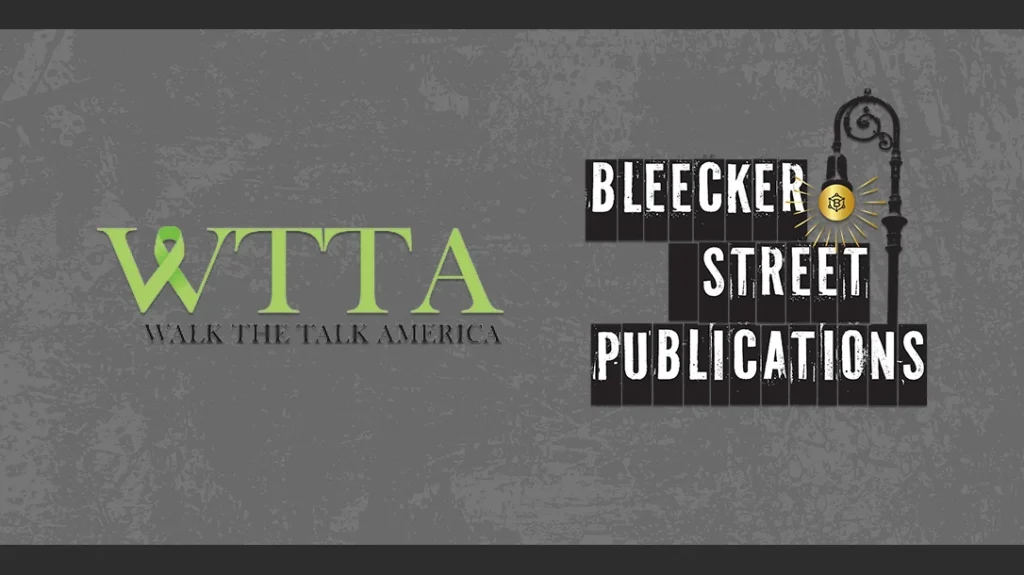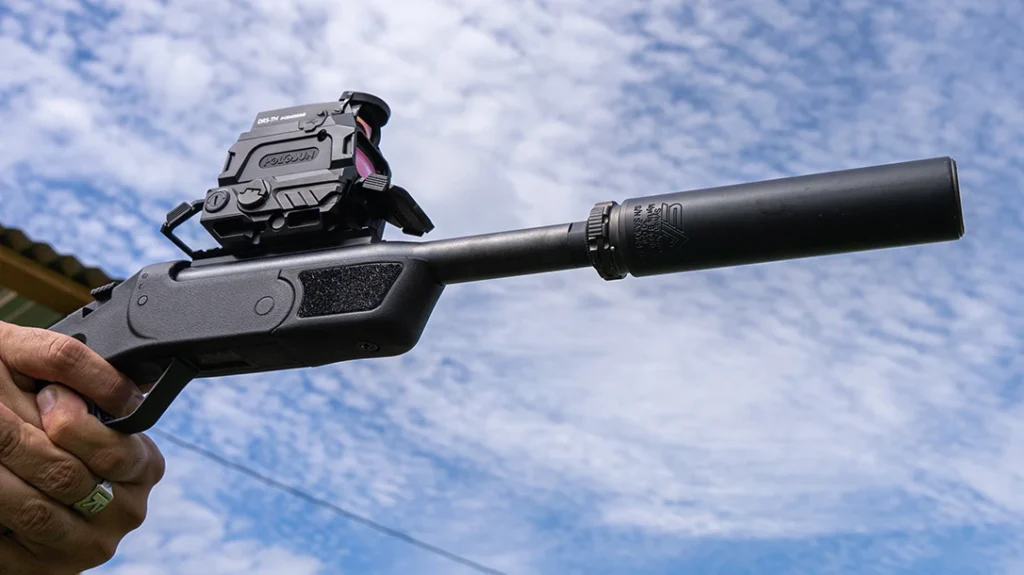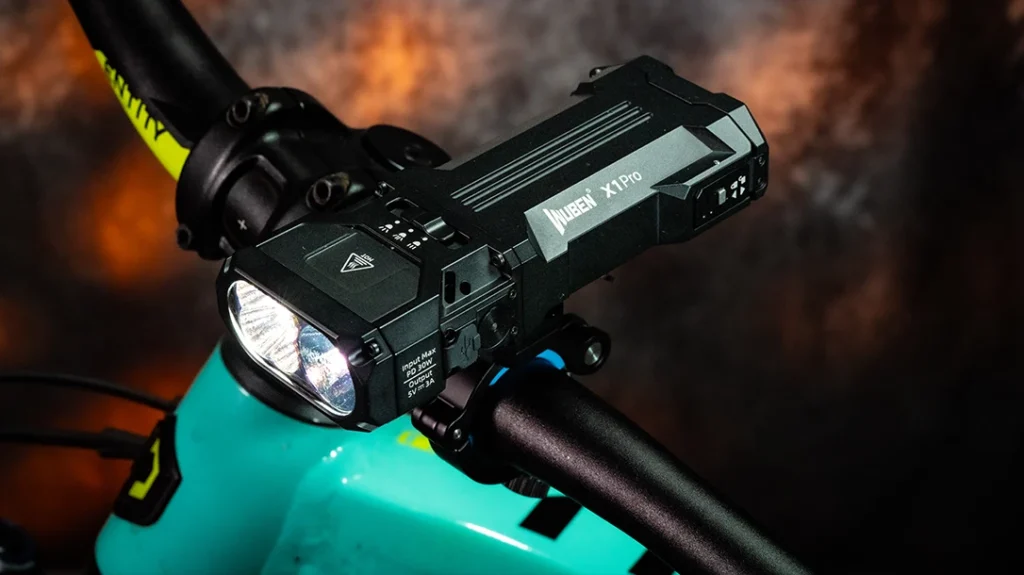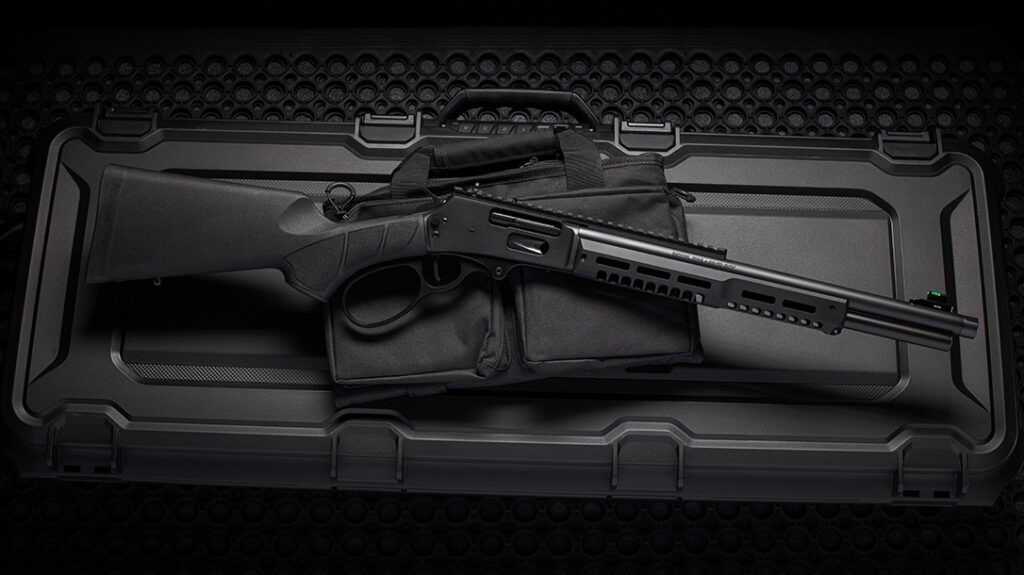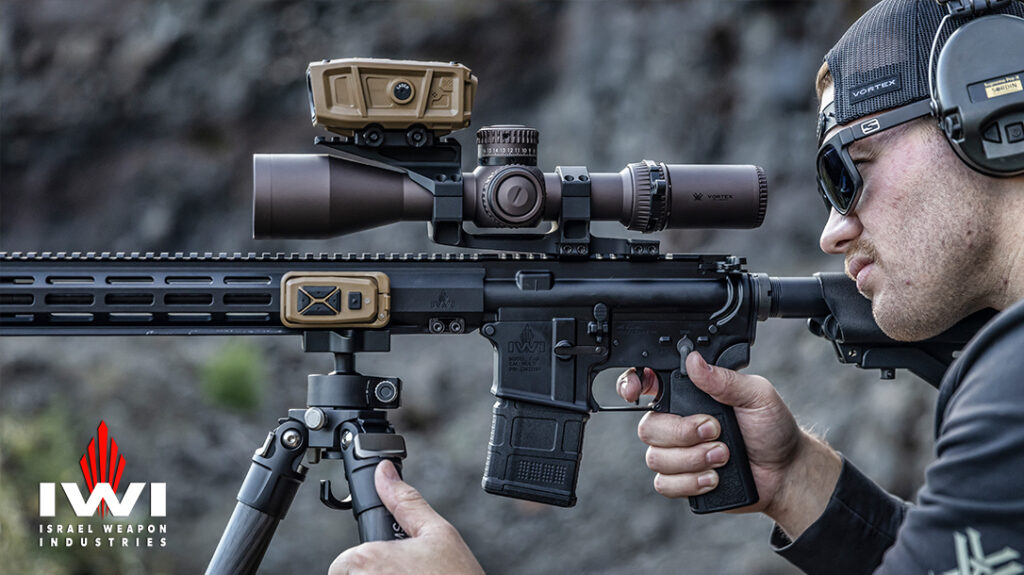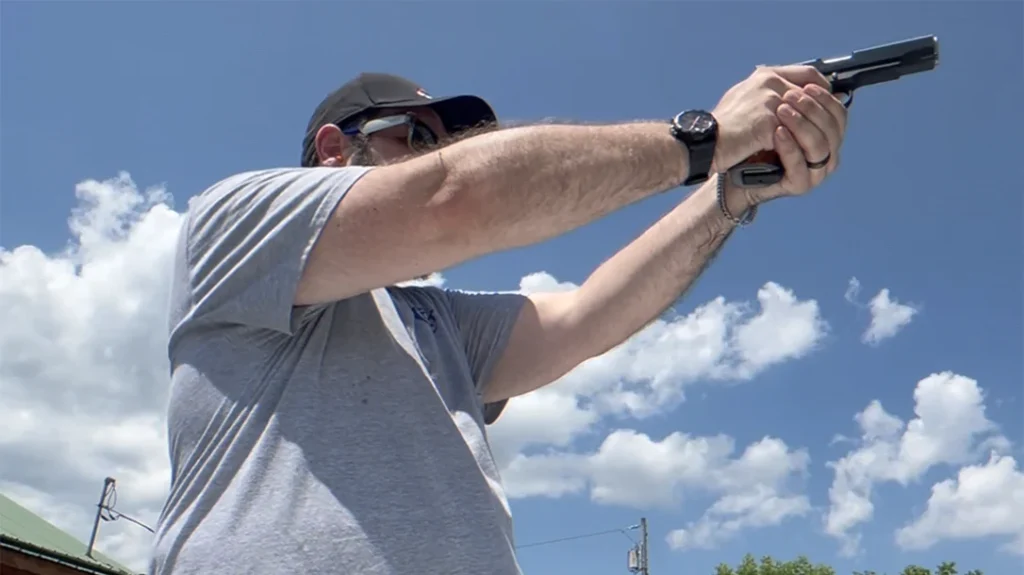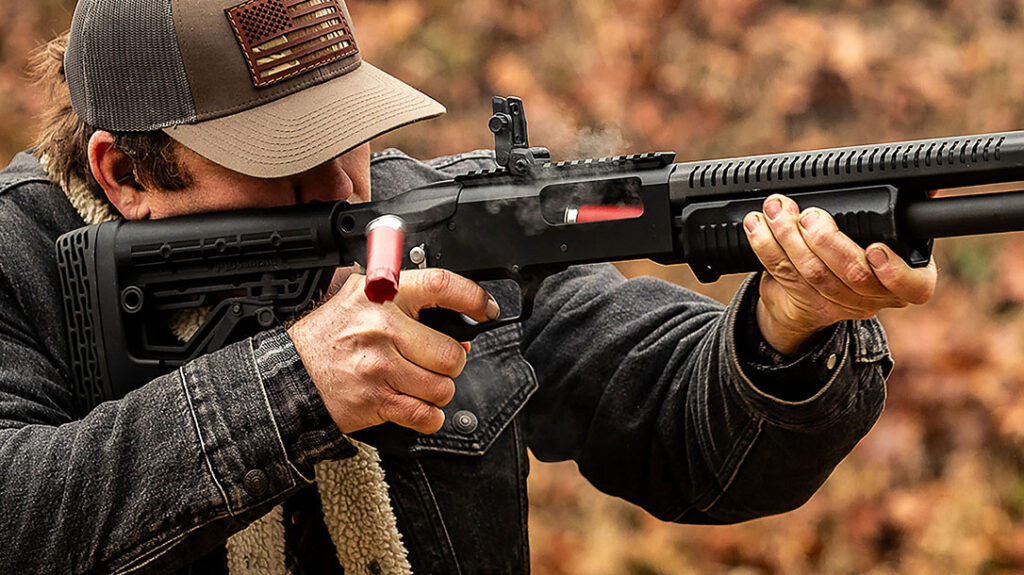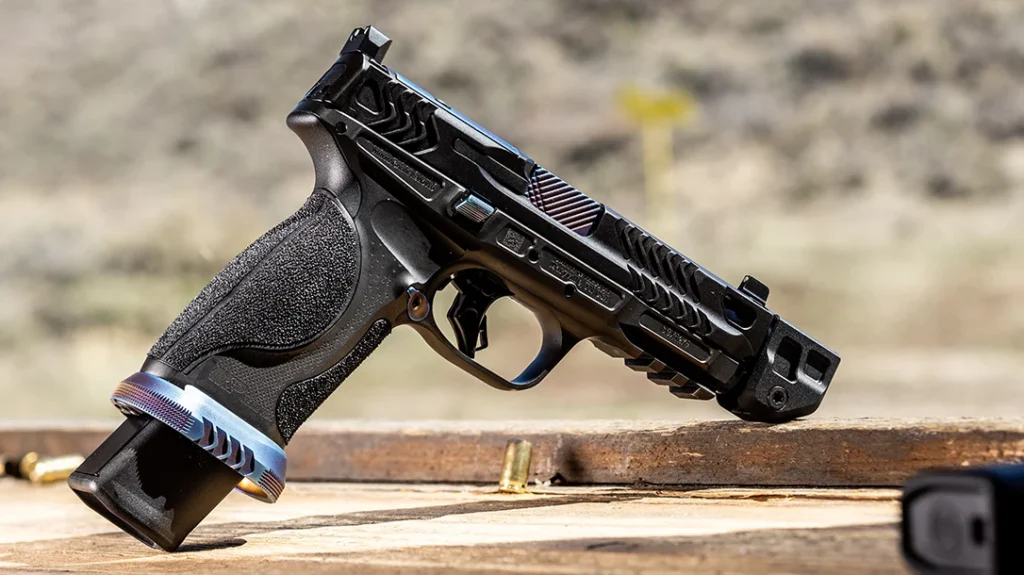According to the experts and professionals of the firearm community, dry-fire training is important for all shooters at any level. It goes a long way to improving shooting performance. However, I always assumed it would not help correct my shooting mistakes at all. That was until I decided to give it a try for myself. Here is my experience and everything I learned about dry firing for four weeks.
The 4-Week Dry-Fire Training Challenge
To ensure I could make this challenge attainable, I set a goal to train three times a week. Each week, I would pick one range day where I would shoot 10 rounds to check my progress.
To assist me in the challenge, I decided to use the Mantis X10 Elite Shooting Performance System. This kit is designed for use both on and off the range and includes various types of drills to help you strengthen your skills.
Advertisement — Continue Reading Below
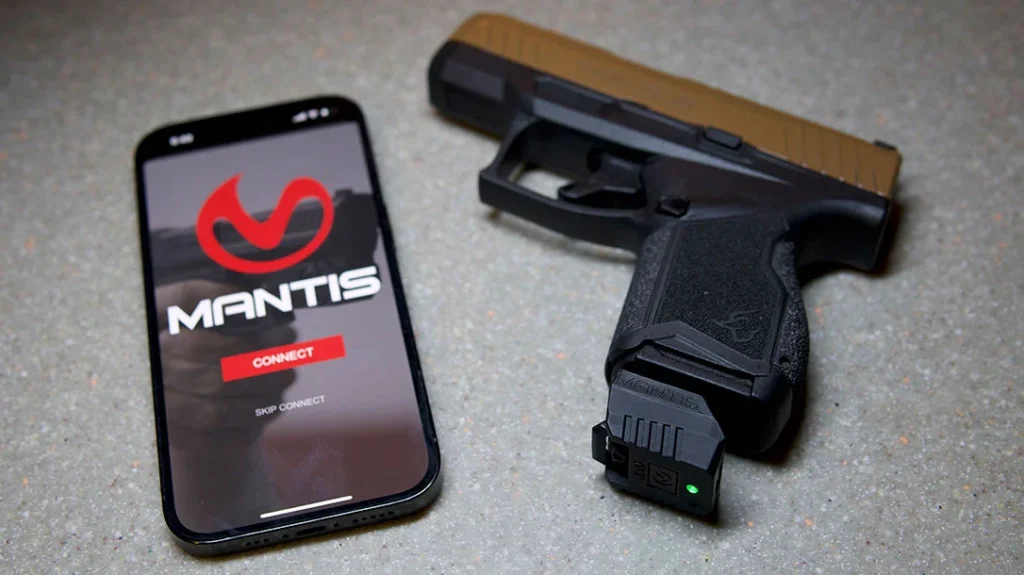
The drill that I primarily practiced with was the Open Training Drill. It allows participants to fire off as many rounds as needed and lets them view accuracy, trigger movement, and possible user mistakes.
Week 1 of Dry-Fire Training
On the first day of training, I decided to start with a 15-minute session. This would give me time to get used to operating the dry firing system. It felt a bit strange shooting an empty firearm at a blank wall. But by day two, it felt like second nature.
Advertisement — Continue Reading Below
To help me get more comfortable, I moved to a quieter location and put a sticky note on the wall to give myself something to aim at.
For my second day of training, I shot about 50 rounds in a set of 5 drills. I began to focus on the mistakes I was making, such as pushing the handgun forward and breaking my wrist up.
It felt a little discouraging seeing everything I was doing wrong. However, that feeling quickly went away when the screen eventually displayed “good shot” from hitting a bullseye. On day three, I fired 30 rounds and noticed that my scores were averaging around the high 50s.
Advertisement — Continue Reading Below
Week 1 of Range Training
Once the range portion of the 4-week challenge arrived, I could not help but feel my anxiety start to rise. I was extremely nervous that I would fail the challenge and not make a single shot on target. But I quickly learned I had nothing to be fearful about.
As soon as I squeezed the trigger, I watched in pure awe as the bullet made contact and hit towards the center of the target. Feeling my confidence start to rise, I made sure I took my time firing the rest of the shots.
I walked away from the range that day with six out of ten rounds hitting the target.
Advertisement — Continue Reading Below
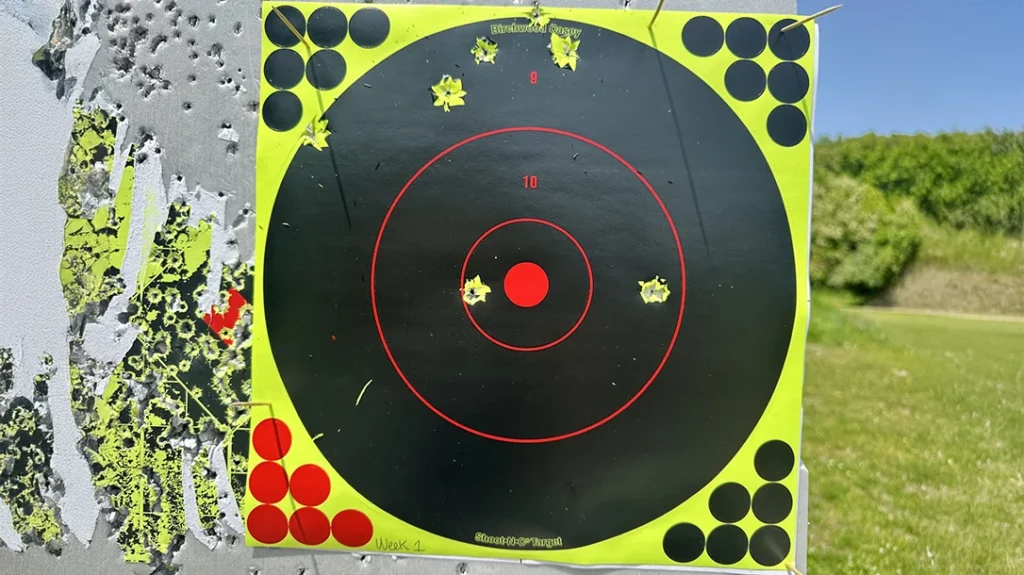
Week 2 of Dry-Fire Training
Out of the four weeks, my second week was my most challenging because of my busy schedule. This made it difficult to find time to set aside to train. The time constraint meant I had to keep my sessions short by allocating 50 rounds each on days 1 and 2 and about 35 rounds on day three.
One of the best decisions I made throughout this challenge was upgrading my sticky note target for an actual target. It helped my shooting progress tremendously. As I worked on my stance and sight alignment throughout, my score started to average in the high 60s. I could not have been happier with these results.
Advertisement — Continue Reading Below
Week 2 of Range Training
For the second week of the range challenge, I felt a bit more confident in my skills. However, a part of me was still nervous that I would not do well. As I focused on my breathing, I fired off round after round. I was blown away that I made a total of ten rounds make contact with the target.
I will note that I did have some difficulties with flinching and almost forgot how startling the recoil can be. Nonetheless, I was still proud of my progress and was excited for week 3.
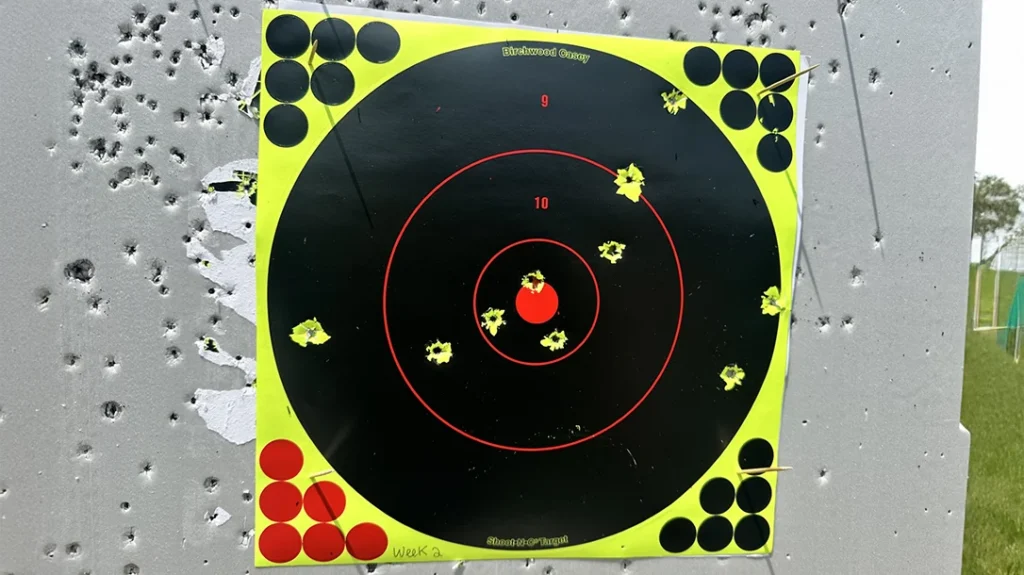
Advertisement — Continue Reading Below
Week 3 of Dry-Fire Training
Once day one of week three rolled around, I was feeling a bit bored with using the Open Training drill. So, I decided to shoot 10 rounds using the MantisX Benchmark drill as a warm-up. This drill focused on precision and was a fun change of pace from what I had been practicing.
After experimenting with the new drill, I shot 15 rounds using the Open Training drill and started to see even more progress. My average score went from the high 60s to the high 70s.
While I was still making mistakes such as breaking my wrist up, heeling, and pushing, I was extremely proud of the progress I was making, but knew I still had a lot to work on. By day three, I made it a goal to practice some breathing techniques.
Advertisement — Continue Reading Below
Week 3 of Range Training
Out of all the range days, I found that week three was the most frustrating because I kept anticipating the recoil and was practicing improper trigger control. I was able to hit the target in 8 out of 10 rounds. However, I found that to fix certain shooting problems, I would need more than 10 rounds.
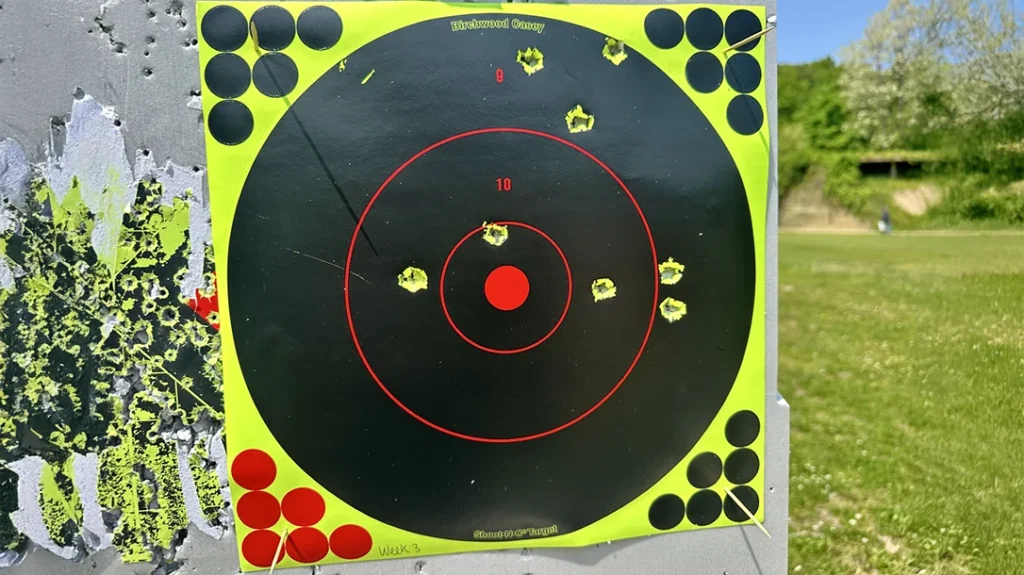
Week 4 of Dry-Fire Training
By week four, I was excited that it was the last week of my challenge and was ready to complete the final three sessions of my training. After shooting 50 rounds on day one, I still could not get over my average score being in the high 70s. Truthfully, I felt like I was on cloud nine until day two’s training rolled around.
Advertisement — Continue Reading Below
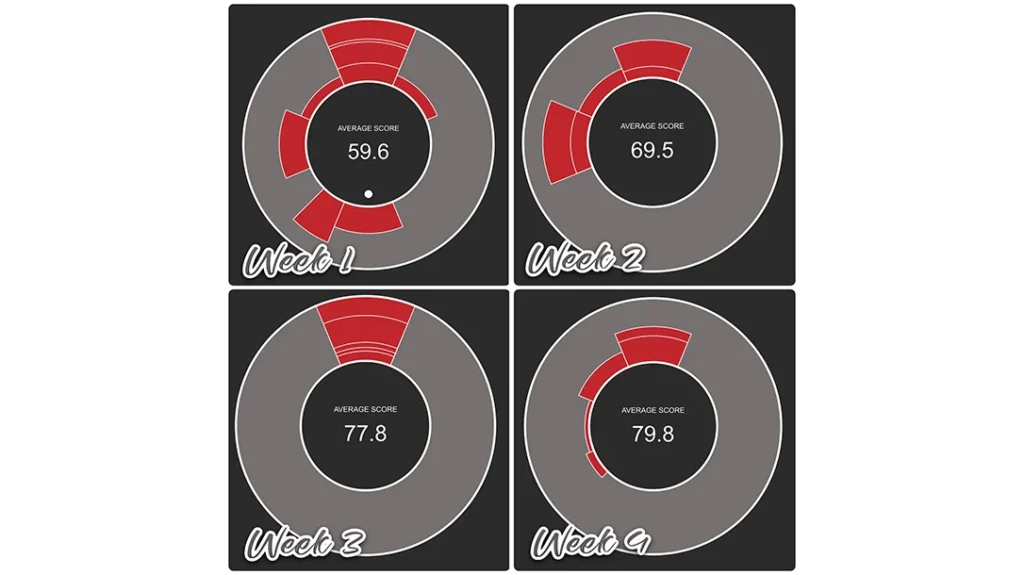
Out of the four weeks, day two of week four was probably my worst training day. My aim was off. My stance felt funny. Everything just was not flowing together, and I let my frustration get the best of me. This, in turn, made my scores not the best.
While I was not proud of the drop in my scores, it was a good lesson that not every training day will be sunshine and rainbows. Some days, you are just going to have a completely off day, and that is okay.
This meant that on day three, I would have to put more effort into practicing maintaining a positive attitude. I needed to remember that the point of training is not just to get better, but also to have fun.
Week 4 of Range Training
Similar to weeks 2 and 3, on my fourth range day, I was able to hit eight rounds onto the target. In an attempt to stop moving the firearm as I aimed, I made sure to pay attention to my breathing. I still had a flinching issue, which made me move the firearm upward as I was shooting. This led to me missing some rounds.
While this was frustrating, I tried not to let it ruin my time and focused on having fun. I just kept trying to remind myself that some mistakes take a bit longer to correct. Once the rounds were complete, I stepped back to admire my work, feeling pleased at all the hard work I put into the last four weeks.
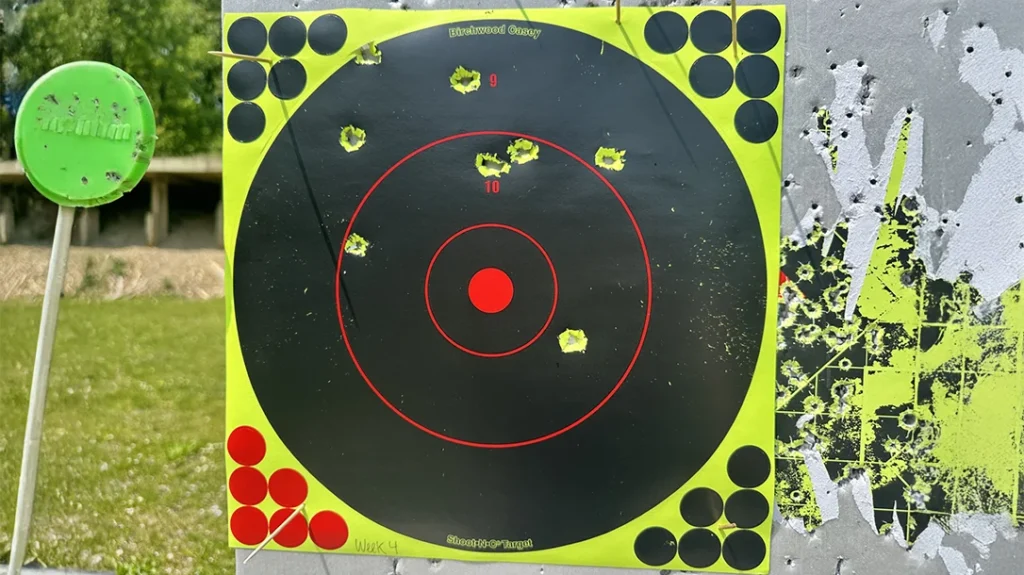
Final Thoughts
Overall, this challenge was fun, educational, and just the change of pace to my training that I needed. While I do not think that 4 weeks is enough time to fix every shooting error, I do believe that it is a step in the right direction to shooting success.
If you put in the time and effort, dry firing can and will 100% improve your shooting performance. I am so happy I completed this challenge. If you are looking to fix any of your shooting errors, I cannot recommend this challenge enough.
